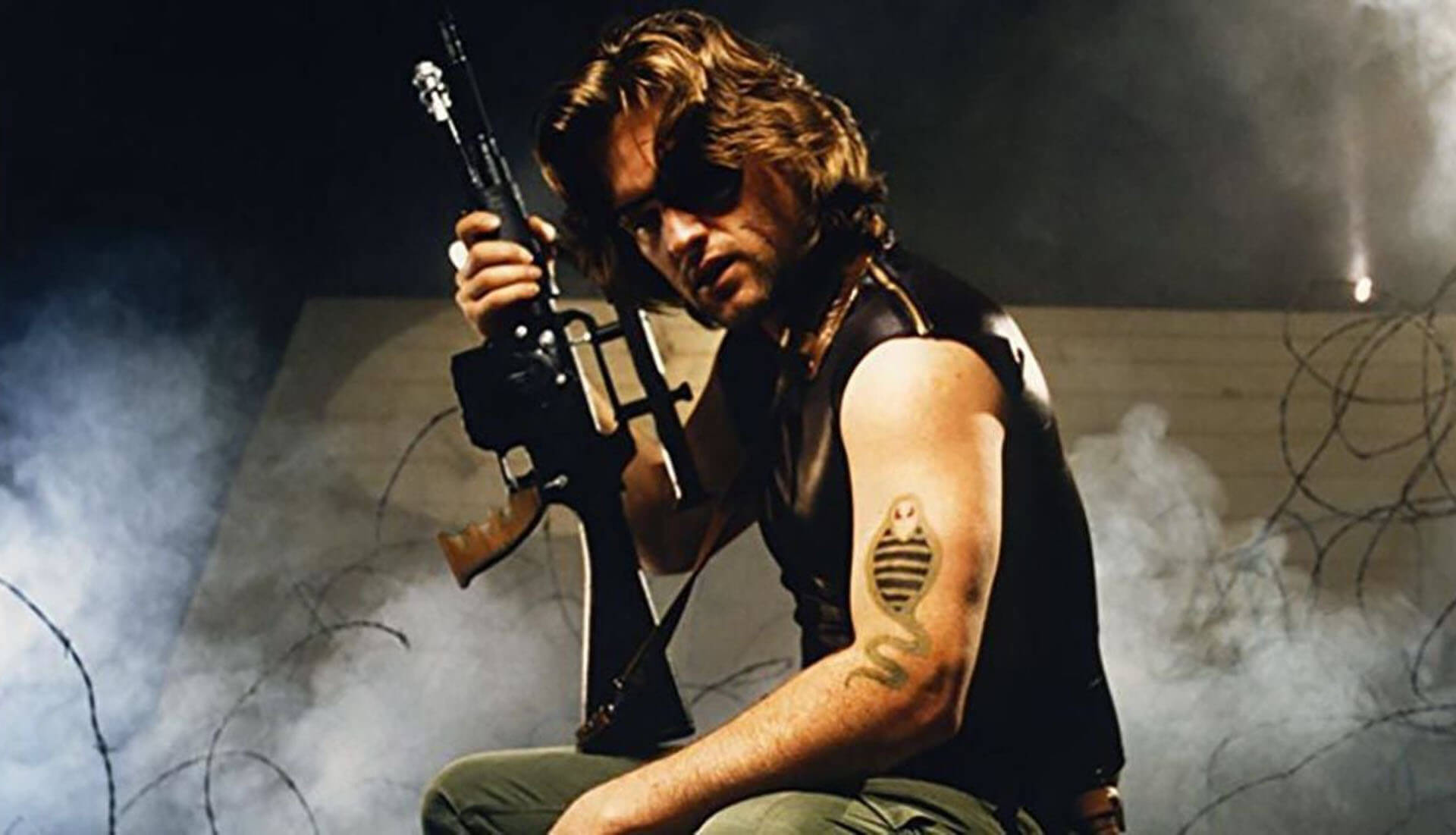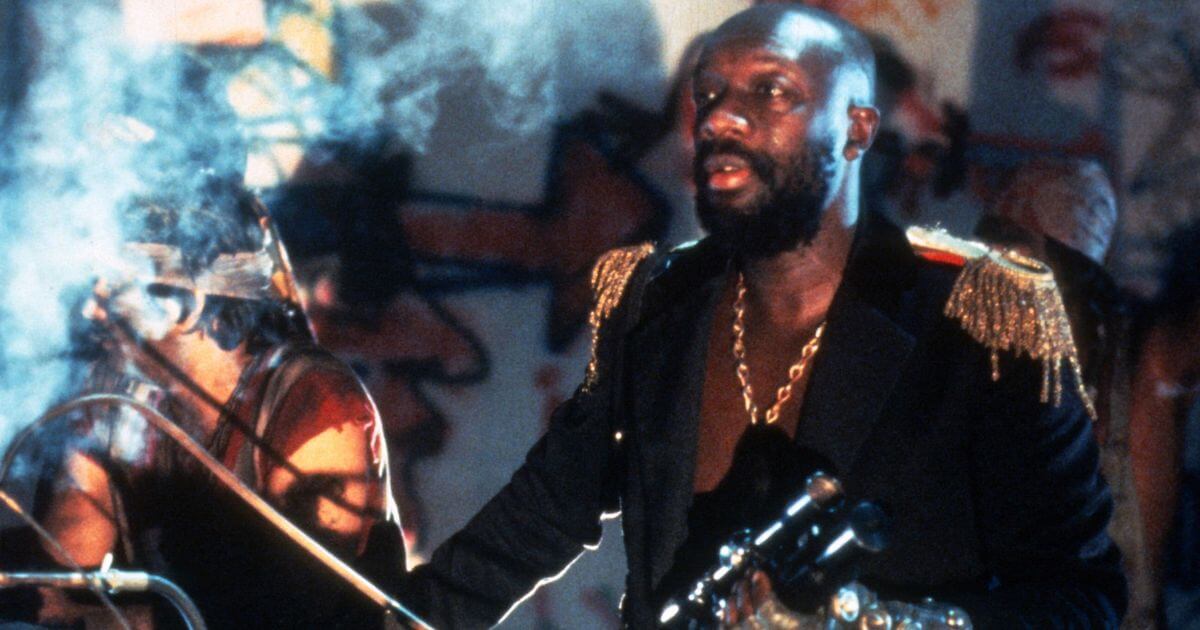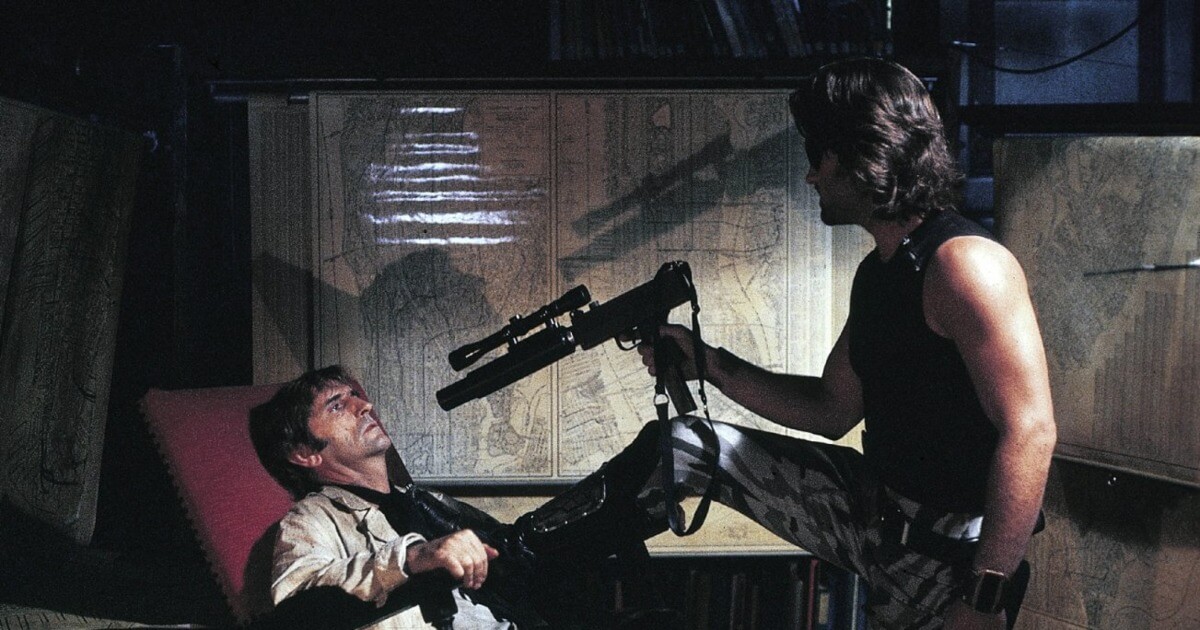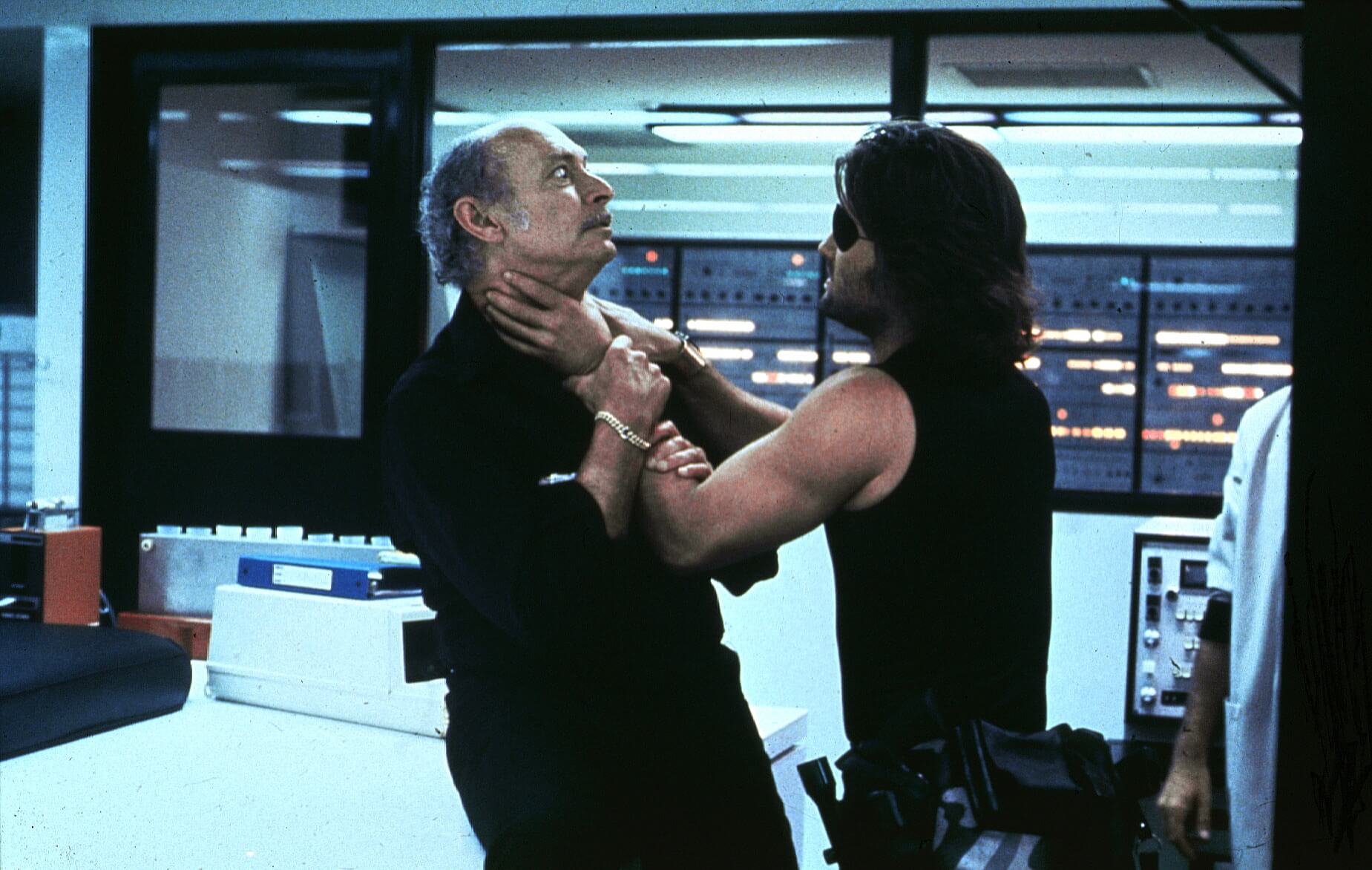ESCAPE FROM NEW YORK. As fresh and futuristic sci-fi as ever

Considering the status of John Carpenter’s Escape from New York after more than forty years since its premiere, I am compelled to reflect on my relationship with this film. For as long as I can remember, whenever asked about my favorite movie, I consistently answer that it is this fantastic thriller where Kurt Russell runs with an eyepatch as the relentless Snake Plissken, trying to find the President of the United States. I could list dozens of other films that I consider better, more valuable, outstanding; even Carpenter himself has works in his repertoire widely regarded as masterpieces, with which I cannot argue. And I don’t want to – just as I revere Escape like no other film, its creator remains my favorite director to this day. Yet, on my personal list, iconic titles like The Fog, Big Trouble in Little China, They Live, In the Mouth of Madness, and even The Thing stand below what might seem like a somewhat dated film from 1981.
In Escape from New York the year 1997 is not the past but still the near future. Manhattan Island has been turned into a massive prison, guarded from all sides by law enforcement, overseen by Bob Hauk (the iconic spaghetti western actor, Lee Van Cleef). Once you enter, you never leave – it’s a life sentence, and escape is impossible. On the same night a decorated war hero, now a criminal, Snake Plissken, is to be incarcerated there, Air Force One crashes in New York. The head of state (the excellent Donald Pleasence) becomes an involuntary prisoner, and this happens at the least favorable time, during peace talks between the United States, China, and the Soviet Union. Action must be taken quickly and discreetly, so Plissken is offered the mission to rescue the president in exchange for a full pardon. Snake’s additional motivation is a microscopic explosive charge injected into his carotid artery, set to detonate after 24 hours (the duration of the mentioned summit) if the mission fails.

The plot of Escape from New York may seem somewhat clichéd today, but it is an exceptionally misplaced argument when talking about a film that served as a prototype for countless futuristic screen visions. Especially after 2000, the film industry eagerly invoked the narrative structure of Escape – District 13 (2004), Doomsday (2008), Lockout (2012) – and a remake has been mentioned for over a decade, constantly changing its planned director and actor. This is not surprising, as even Carpenter tried to capitalize on the success of his film by making a sequel, Escape from Los Angeles (1996), without the expected success. Ultimately, the original remains unrivaled, and its popularity, especially today, is perhaps best explained by the genesis of the entire project.
After the spectacular success of Halloween (1978) and the confirming of Carpenter’s talent in the horror genre with The Fog (1980), the director returned to a script written in 1974. Escape from New York was an unpleasant vision of America, born out of a lack of trust in its president after the Watergate scandal, the ongoing consequences of the Vietnam War, and an unprecedented rise in crime during that period. The latter contributed to the creation of a particularly grim picture of the United States in cinema, a place where the law of the strongest reigns, and order can only be achieved through vigilante justice – from this thinking emerged the entire Death Wish series with Charles Bronson (initiated with the 1974 film), as well as Dirty Harry and even The French Connection (both from 1971). In the latter two, the police, representatives of authority, do not hesitate to use the same means as their adversaries, not so much blurring the line between law and lawlessness as revealing the system’s helplessness and the inadequacy of legal methods. It’s no wonder that in Carpenter’s world, there is no traditional police force – the forces guarding the prison more resemble the military, not interfering at all with what happens inside, responding to escape attempts with immediate gunfire.

After the events of September 11, the Iraq War, and the presidency of George W. Bush, it’s hard not to see analogies between what America experienced in the late sixties and seventies of the last century and the previous decade. But in the era of ongoing terrorist threats, the plot written by Carpenter and Nick Castle does not seem probable or current – the escapism of the idea, born out of a genuine concern for the future of his country, remains nothing more than entertainment for the masses. And although the images created by the Halloween creator easily found reflection in our lives, and after the World Trade Center was destroyed, Carpenter announced that he would take a break from directing because reality had surpassed fiction, Escape from New York cannot be considered an exceptionally pessimistic vision of the world. It is too filmic and even comic book-like in its style to come true.
Where does this comic book aesthetic manifest itself most? Primarily in the vision of New York itself, a megalithic city, a refuge for all criminals, where a self-proclaimed Duke (musician Isaac Hayes) has taken power. His army of thugs looks like a collection of the worst misfits, savages, and weirdos, led by his right-hand man, Romero, with hair standing on end, a deathly pale face, and bulging eyes. But even the Duke doesn’t resemble a leader – his perpetually unbuttoned blazer, a large gold earring, and gold jewelry around his neck rather evoke the stereotypical image of a black pimp from the seventies than someone we could consider a serious threat. The cars he drives are adorned with chandeliers, and the concept of entertainment is reduced to watching wrestling matches using baseball bat stakes studded with nails and makeshift shields made from garbage can lids. Carpenter turns national sports, such as wrestling and baseball (basketball in the sequel), into a nightmarish parody, replacing the fun with a fight for survival.

The world of Escape from New York is wild and exaggerated, but some of the choices made by the director and his team were more a result of a small budget than creative decisions. Many believe that Carpenter made his best films in situations where he had to deal with limitations, with small financial resources that forced him to be more inventive. That is not entirely true – it is a fact that he achieved his greatest box office successes with these low-budget projects, but even his expensive films have nothing to criticize, even if during their premiere, the magnificent The Thing and Big Trouble in Little China suffered severe setbacks. In the case of Escape from New York, the visual minimalism is evident but also serves the overall presentation. Here is a film that, on the one hand, still adheres to the dirty, cheap, and depressing screen aesthetics of the seventies but, at the same time, offers action typical of the new adventure cinema, at least in the multitude of attractions and pace. It lacks the grandeur characteristic of Spielberg and Lucas, which is clearly manifested in a small budget, but perhaps this also contributes to the atmosphere typical of Carpenter.
I stopped being a fan of the term “atmosphere” when it comes to movies a long time ago, mainly because every film has some atmosphere. However, in the case of Carpenter, many refer to this argument as if it were unquestionable, obvious, and characteristic of him. And they are right, not only because of the music composed by the director for most of his works, mostly played on a synthesizer, based on simple but memorable motifs. The atmosphere is also evident in the extremely long and calm shots, the meticulous preparation of frames, the use of panoramic lenses creating the illusion of more elaborate cinema (Dean Cundey’s work as the cinematographer in the first and best Carpenter films is invaluable). Finally, in building tension in a way typical of horror, even in the case of the action-packed Escape from New York. All of this results, to some extent, from limitations – Carpenter always aimed beyond the somewhat inherent B-movie quality, escaping from it through his directorial mastery and perseverance. Therefore, most of his work now fits into the classic cinema category, without the need to label it as low-budget, independent, or B-movie.

The first Escape from New York seems to be the most striking example of a film that, in the hands of a less talented creator, shouldn’t have succeeded at all. Visions of the future usually require a large budget, elaborate special effects, creative madness – which are lacking here. The real New York is only in one scene, and most long shots are actually painted models by a young James Cameron (!); the budget did not allow for shots in the titular city, and it didn’t look bad enough for Carpenter. The city of St. Louis, destroyed by a massive fire in 1976, was perfect for this, with its empty streets, ravaged buildings, and lack of lighting (the city willingly darkened entire blocks at the director’s request). Also, by placing many scenes in the abandoned buildings of the former cinema, station, or library, there is a sense that civilization has fallen, and a new order is rising from its ruins.
In the commentary for the DVD release, Carpenter calls his vision a medieval future, and this strange timelessness allows him to create a world that is striking with its ugliness and extremes, yet remains realistic. The viewer has no problem accepting the image of such America, as the creators avoid kitsch, and even if it appears on the screen, it emphasizes above all the wildness of its characters. Carpenter does not allow himself at any moment to have any looseness or wink at the audience – he maintains seriousness until the end, making the film, despite all its comic book aesthetics, moving on the most basic level. During his suicidal mission, the main character encounters characters who die, and regardless of whether it is a girl he met literally a moment ago (Russell’s then-wife, Season Hubley) or a friendly huckster to Snake (the reliable Ernest Borgnine), it is impossible not to be moved by their deaths. The barely outlined relationship of Harold “Brain” Hellman with Maggie (the unassuming but distinctive Harry Dean Stanton and Adrienne Barbeau, with her breasts pouring out of her dress) finds its unexpected punchline, and even Snake’s race against time, initially treated as a routine necessity, stuns with its load of drama in the finale. That’s why I love Escape from New York – it tells an absurd story without abandoning seriousness, remaining an example of entertaining cinema that is impossible not to enjoy until the very end.

But despite Carpenter’s genius, Escape from New York wouldn’t be the same without Kurt Russell playing the lead role. Producers pressured for Charles Bronson to be cast as Snake Plissken, but the director deemed the actor too old. Carpenter had already worked with Russell a few years earlier on the TV biography of Elvis Presley. Apparently, even then, he noticed something in him that many couldn’t see through the actor’s previous work, primarily associated with Walt Disney films. Meanwhile, Russell as Snake is a cynical tough guy, a disillusioned antihero, but always having the last word in the game, where he seems to be just a pawn.
The iconic image is complemented by eternal stubble, an eyepatch (Russell’s idea), and long hair, indisputable evidence of Carpenter’s sympathies, especially since Plissken is the only character in the original with hair down to his shoulders. Gruff voice and laconic speech bring to mind characters played by Clint Eastwood, although Russell’s character quickly became a model for countless heroes, both in cinema and computer games (such as the famous Solid Snake in Metal Gear Solid). Today, it’s hard to imagine someone else in the role of Snake, which may be one reason for the difficulty in making the still-planned remake – it’s not about replacing the actor but the icon, and that itself seems impossible.

All of what I just wrote, I was not aware of when I first watched Carpenter’s work. I might have been around eight or nine years old, already loving to watch movies, yet it was Escape from New York that made my love for cinema stay with me to this day. It’s easy to dismiss this enduring feeling as nostalgia, but how many films have not withstood the test of time, how many of them have replaced the childlike enthusiasm with adult disappointment. In no case is Carpenter’s work intended for the youngest, but it clearly can enchant and overwhelm viewers regardless of their age. The political, ideological context, and even understanding specific character actions seem secondary when talking about cinema that storms the heart by the way it was told, the style, and the conviction that we are watching the greatest escape in history.
Escape from New York is not a great film, but in my perception, it remains a great cinematic experience, to which I am not as uncritical today as I used to be. However, this does not prevent the awareness of dealing with something extraordinary and unique with each subsequent viewing. More than forty years after its premiere, Carpenter’s iconic cinema still looks and sounds as fresh and futuristic as ever; on the one hand, it seems like a relic of its time, on the other hand, an unfulfilled vision of an exceptionally bleak America, still not so distant in time. However, it is primarily a confirmation of the talent of its creator, who saw the titular escape as an escapist amusement, even if it originated from real concerns. The anti-systemic undertone of the whole remains to this day, and Snake’s final gesture is both a manifesto and proof of the uniqueness of this character and, incidentally, Carpenter himself.

